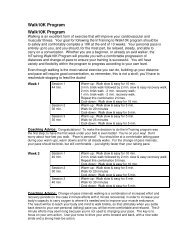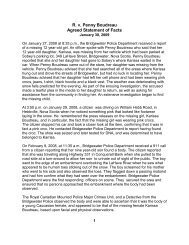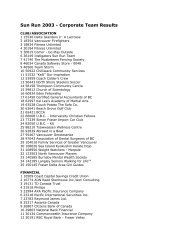Toivanen v. Electronic Arts (Canada) Inc. (No. 2 ... - Canada.com
Toivanen v. Electronic Arts (Canada) Inc. (No. 2 ... - Canada.com
Toivanen v. Electronic Arts (Canada) Inc. (No. 2 ... - Canada.com
Create successful ePaper yourself
Turn your PDF publications into a flip-book with our unique Google optimized e-Paper software.
<strong>Toivanen</strong>’s previous profit ($38,622.77) must be deducted from that profit, for a net<br />
profit of $69,230.08.<br />
[107] EA says that Ms. <strong>Toivanen</strong> had an obligation to mitigate her loss by reinvesting<br />
her profit of $38,622.77 back into EA shares. It relies on Asamera Oil Corp. v. Sea Oil<br />
and General Corp., [1979] 1 S.C.R. 633, for the application of the principle of mitigation<br />
to the purchase of replacement shares in stock option cases.<br />
[108] EA relies on Asamera, a breach of contract case, for the proposition that a<br />
defendant should not be called upon to pay for avoidable losses by a plaintiff which<br />
would result in increased damages for a defendant.<br />
[109] However, in Genesee Enterprises Ltd. v. Abou-Rached [2001] B.C.J. <strong>No</strong>. 41,<br />
relied on by Ms. <strong>Toivanen</strong>, the B.C. Supreme Court clarified the application of Asamera:<br />
In Asamera Oil Corporation Ltd., the plaintiff was a large corporation and<br />
there was no evidence that it did not have the financial resources to enter<br />
the market and purchase replacement shares for those it claimed had not<br />
been delivered. In this case, the evidence is clear that Genesee had no<br />
assets with which to purchase a large number of IHI shares. Further, the<br />
evidence of the individual defendants by counterclaim shows that none of<br />
them had the financial resources to provide funds to Genesee for that<br />
purpose.<br />
One of the issues that occupied the Supreme Court in Asamera Oil<br />
Corporation Ltd. was whether the plaintiff could claim that it had<br />
adequately mitigated by pursuing its action against the defendant. The<br />
Supreme Court found that it had delayed unduly, and could only claim<br />
mitigation by litigation for a portion of the period over which the litigation<br />
ensued.<br />
In this case, the plaintiff pursued litigation promptly, first by the petition<br />
and subsequently by this action. The time that has ensued until this<br />
judgment is not a factor that reduces the effect of the plaintiff's actions on<br />
the mitigation of damages.<br />
I therefore find that the plaintiff mitigated its damages by pursuing its<br />
claim against the defendants.<br />
[110] In evidence before me were documents regarding Ms. <strong>Toivanen</strong>’s financial<br />
situation at the time she was forced to exercise her stock options. She did not have the<br />
26
















